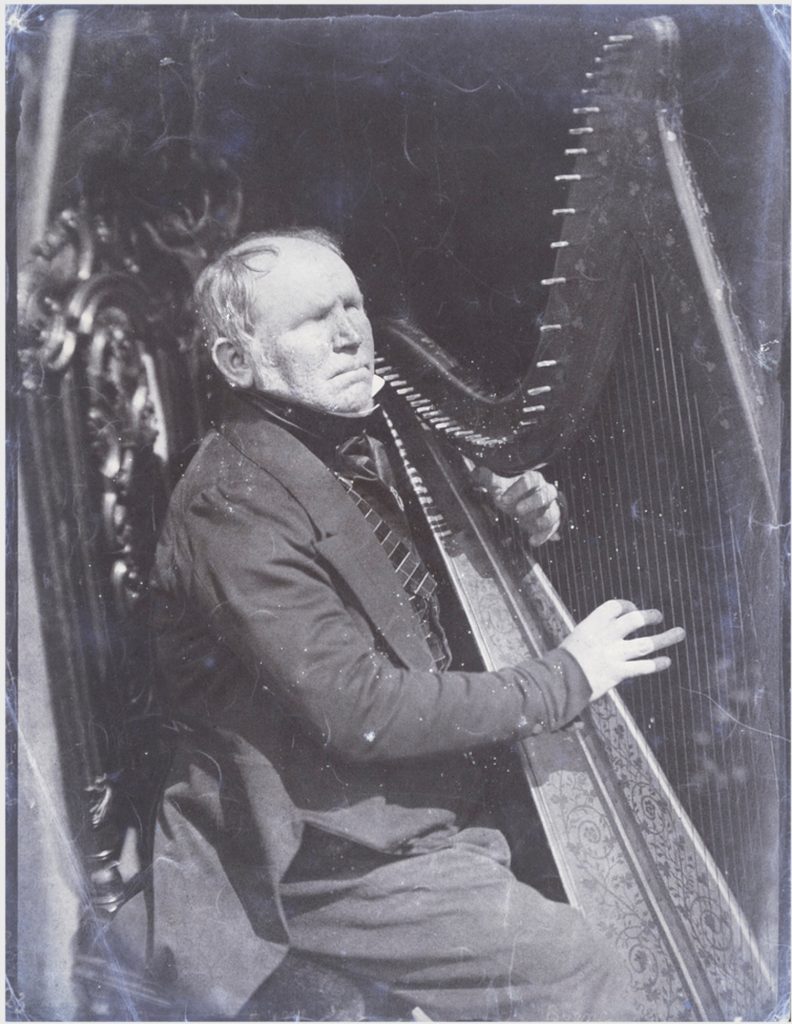This page is to explain some of the projects I’m working on right now.
The Irish harp tradition through the long 19th century
My main current focus is the traditional Irish harpers playing wire-strung Irish harps in the inherited tradition in the 19th century.
It started when I saw a set of brass wire strings that had been fitted to a new harp in 1908. The strings had been installed by George Jackson (1833-1909), who had learned the harp from Patrick Murney in about the 1850s, who had learned from Valentine Rennie in the 1830s, who had learned from Arthur O’Neil in around 1810, who had learned from Owen Keenan in the 1740s.
Seeing George Jackson’s strings made me very curious to know more about these tradition-bearers through the 19th century, and so I started trying to find out about their music, their learning, their traditions, their performance contexts, and their harps.
I also started to investigate how it came to be that the tradition stayed alive into the 20th century, and yet has been marginalised, written out of history, and ignored by Irish harp revivalists
I started by reading and collating references and information. I made a database of traditional harpers who were active between 1792 and 1909, which now has about 70 names on it. I am in the process of writing biographies of each individual harper one at a time, which I am posting here under the tag Long 19th century. I also commissioned the harpmaker Tim Hampson to make an accurate copy of an 1820s Irish harp, the same type of harp these people were playing, so I could start to understand how their music may have worked.

Old Irish Harp Transcriptions Project
This was my main artistic and research project from Autumn 2019 through to Spring 2022, though it isn’t really finished and I will probably keep ticking along with it on and off. I have been searching for, identifying, categorising and analysing musical notations which appear to have been written down as live transcriptions of the playing of old Irish harp tradition-bearers. So far I have only found this kind of notation in the manuscripts of Edward Bunting. Mostly they seem to have been done by Edward Bunting himself, but I am starting to tentatively suggest one or two live transcriptions from harpers done for Bunting by other people. I hope that in time I may identify live transcriptions from harpers, made by other people in the 19th century, in other collections or archives.
By “transcriptions”, I am referring to notations that seem to have been written live, at speed, as a direct response to what a traditional informant was actually playing, in real time. I am distinguishing these from “copies” which are written more slowly and carefully, with deliberate thought, and also “arrangements” which have creative adjustments to the melody and added accompaniment, for the piano.
In January 2020, I wrote a blog post titled Old Irish harp transcriptions project, which marked the beginnings of writing up my work here.
- I have made a tune-list spreadsheet listing all the tunes in Bunting’s transcription notebooks and printed collections, and indicating both the nature of any transcriptions, and the tags or attributions given to them.
- I have been compiling PDF indexes and text-transcripts of the key transcription notebooks: Queen’s University Belfast, Special Collections MS4.29, MS4.33.1, and others.
- I have been studying individual tunes, writing up my conclusions here on this website. In October 2020, I made a kind of half-way-point interim summary. In April 2021 I made a summary of the second major section of the project, and in April 2022 I did another interim report on progress to date.
- I started making YouTube demonstration videos of the transcription notation realised as old Irish harp performances, but this has pretty much stopped while I focus on making commentaries and machine audios of the remaining live transcription manuscript pages.
The main research aims of this project are to narrow down the evidence for “what is old Irish harp performance style?” By ruthlessly excluding consideration of harp tunes that are passed down to us as piano arrangements, or through the fiddle, pipe or song tradition, I hope that we can get a more focussed view of the idiomatic Irish harp style which came to an end in the early 20th century. Creating a view of what the harp style is like will help inform revival attempts.
You might also want to look at my list of potential research projects, which I am probably not going to get around to doing, but which may be useful for private researchers or prospective PhD candidates looking for an idea of something they could usefully do.